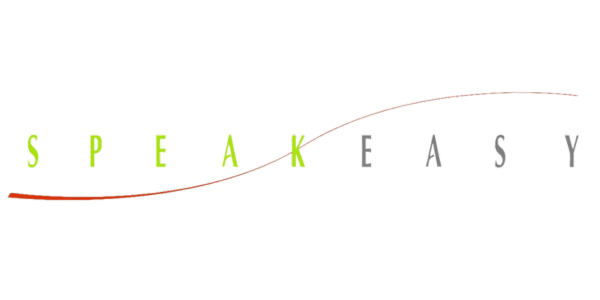
14 Jul Leveraging Persuasion to Excel in Sales Meetings
There isn’t a “one-size fits all” approach when it comes to sales meetings. In fact, as audience preferences, needs, and wants change, no two sales meetings should be exactly alike. Your pitch delivery can mean the difference between securing the sale or walking away without results. Leveraging effective presentation and persuasion strategies during a sales meeting can help keep your audience engaged in your message and compelled to take action. Communication experts, at Speakeasy, have found that the use of stories and visuals can enhance your ability to connect with your audience while boosting your credibility.
Consider these sales presentation statistics:
- Audiences are up to 85% more likely to buy a product or service after watching a video.[1]
- Continuous communication training gives presenters a 50% higher net sales average.[2]
- After a presentation, 63% of attendees remember stories. Whereas, only 5% of audience members remember statistics presented during a sales meeting.[3]
By enhancing your interpersonal communication skills, you are better prepared and more capable of delivering a compelling case to your audience. Giving an effective presentation requires you to convey confidence, command the audience’s attention, and commit to your message. Since every audience you present to will be slightly different, it is important to adapt your communication style to best fit your audience. This does not mean changing who you are as a person or a presenter, but instead, finding the right balance between your audience’s profile and your preferred communication style. Being authentic in your delivery and finding ways to connect with your audience will often determine your sales success rate. Remember, never assume you know what your audience wants to hear, instead, take the time to research your audience, get to know their demographics, and craft personalized sales presentations that speak to and move your audiences individually.
The communication consultants at Speakeasy recommend leveraging these practical sales communication strategies to take your presentation skills to the next level.
- Identify your audience’s profile. This includes determining who they are, what they want, and what benefits your products/services can offer to meet their needs. Take the time to find at least two pain points for each audience profile and use this to design your sales presentation, highlighting each pain point and how your offering can be a viable solution.
- Determine your call to action. Though this may be positioned at the end of your sales talk, find creative ways to weave this in throughout to convey to your audience what their next step should be. Whether you want them to sign up for an email list, attend an orientation, or request a free trial, be clear and provide the audience with the resources necessary to satisfy the call to action. Remember to clearly provide the necessary phone numbers, email addresses, or registration links.
- Infuse human elements in your message. Above anything else, your audience are human beings with feelings, motivations, and interests. Add in phrases to build connections and similarities between you and your audience, phrases similar to, “Like you, I…” or “If you’re like me, then…” Also, find ways to include anecdotes that bring your message to life and make it more real for your audience. Illustrate a pain point with a brief story and convey how your product/service was able to address and offer a resolution. Keep in mind audiences are more likely to remember a story than detailed statistics.
- Focus on body language and enthusiasm. Practice your sales pitch in the mirror, in front of friends, or record it and play it back for yourself to review. Be sure to focus on ways to add in body language to complement your message and use voice inflections to show enthusiasm or excitement. If your body is tense or if you sound anxious, frustrated, or disenchanted, your audience will be able to quickly perceive this and your message will likely go unheard. Remember to pause, as needed, to compose your thoughts and project a sense of authority and commitment.
Trust plays an important, and often overlooked part, in effective sales meetings. The communication experts at Speakeasy have compiled proven strategies to enhance trust with any audience. To access a complimentary copy of their findings, contact a Speakeasy communication consultant and request a copy of “Great Communicators Build Trust.”
[1] https://www.customshow.com/sales-statistics-presentation-data-youll-be-amazed-by/
[2] https://www.thebrevetgroup.com/21-mind-blowing-sales-stats/
[3] https://mannerofspeaking.org/2009/10/13/making-it-stick-tell-stories/

